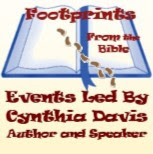During the class this week, we discussed the words ‘covenant’ and ‘testament.’ They are similar, yet different. According to a dictionary of Biblical usage, the word ‘testament’ is more often used in relation to dealing between humans, while ‘covenant’ is used for agreements between God and humanity. Both are from the Hebrew "
berith."
A covenant is more than a contract. A covenant established by God is not negated by our failure or defaulting on our part of the agreement. God's blessing will still happen-aren't we glad that is true!
This is true because God's covenants are based in Grace. Our response should be similar to Psalm 51, which is often prayed (read or sung) during Lent to remind us of our need to repent.
With the Psalmist, we pray,
"Have mercy on me, O God, according to thy steadfast love...Against thee, thee only, have I sinned...Hide thy face from my sins...and blot out all my iniquities...Create in me a clean heart, O God, and put a new and right spirit within me...The sacrifice acceptable to God is a broken spirit; a broken and contrite heart, O God, thou wilt not despise."
Ancient peoples often sealed a treaty or covenant with a meal. One example is the meal Jacob and Laban share (Genesis 21:51-54)
God also covenanted with God’s people again and again. Examples are the Rainbow covenant in Genesis 9:8-17 and the meal Abraham shared with the 3 visitors (angels) in Genesis 18. Joseph shared a meal with his brothers after he was reconciled with them.
Passover is the most important of the Old Testament covenant meals. Exodus 12 tells the institution of the Feast of Passover. Despite 9 different plagues, Pharaoh refuses to let the Children of Israel leave Egypt. Finally, God instructs Moses to tell the Israelites to mark their doorframes with the blood of a lamb and to prepare a feast to be eaten with “
your loins girded, your sandals on your feet, and your staff in your hand.” The Angel of the Lord comes to Egypt and the
“Lord smote the all first born in the land of Egypt…there was not a house where one was not dead.” However, the families of the Hebrews are spared because as the Lord promised,
“when I see the blood, I will pass over you, and no plague shall fall upon you.”
From that time forward, the Jewish people have repeated the Passover meal every year. It is now a week long remembrance, culminating with the Seder meal. It usually falls near Easter. This year, Passover starts on April 19. In the class on Thursday, we did a slightly simplified Seder. There are two parts to a Seder-the symbolic, one could say liturgical, part and the meal itself.
It was during this symbolic remembrance that Jesus instituted the Eucharist. (Matthew 26:26-29, Mark14:17-25, Luke 22:19-20) During class we repeated the ancient symbolic remembrance of the Passover event. There are four distinct parts to the Seder:
The First Cup, of
Thanksgiving, followed by the hand washing and breaking of the first matzo and hiding the Afikomen.
The Second Cup of Haggadah or
Telling (of the events of Passover and the symbolism of the foods) and the Blessing of the Foods
The Third Cup, of
Redemption, where the hope for Messiah (for the Jewish people) is expressed with the chair for Elijah. This is when the hidden matzo (Afikomen) is found and shared.
The Fourth Cup of Melchizedek and
Blessing ends the remembrance part of the Seder. In the context of a family gathering, a real meal would be shared then. On Saturday, I was privileged to be at Epiphany Episcopal in Socorro where we also recreated the Seder and then had lunch.
All of us at the class on Thursday and in Socorro found it very moving to participate in recreating the meal. Everyone agreed that the Eucharist or Communion itself will be more meaningful this Sunday after experiencing the Seder. If you get the chance, participating in a Seder will help you understand more clearly what our Lord meant when he said “this is my Body” and “this is my Blood.”
I close today with the ancient blessing that ends the Seder:
"The Lord bless thee and keep thee: The Lord make His face to shine upon thee and have mercy on thee! May the Lord lift up His countenance upon thee and give thee peace!” To which all respond “Amen, Amen, Amen.”
Next week we will look at the Triumph of Christ in Jerusalem as we enter Holy Week.








